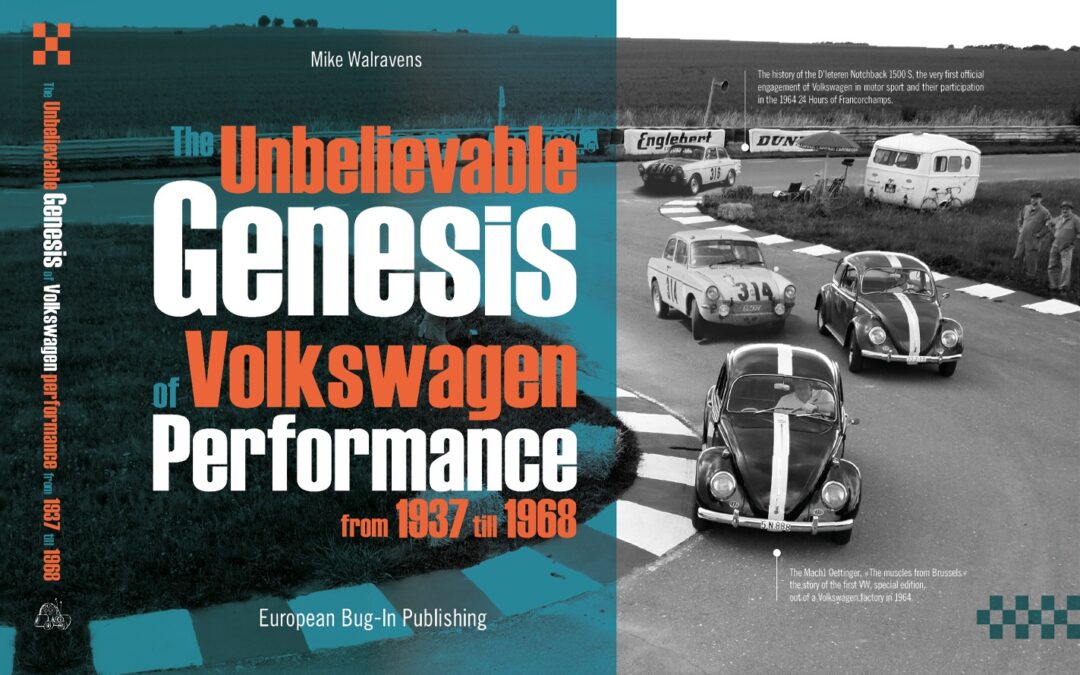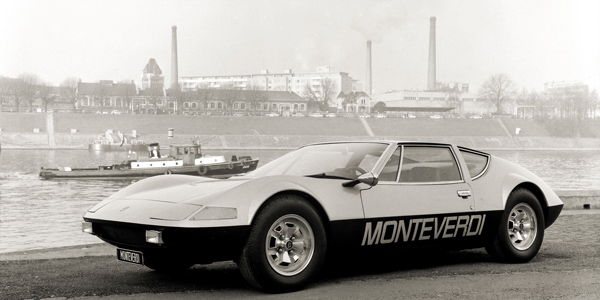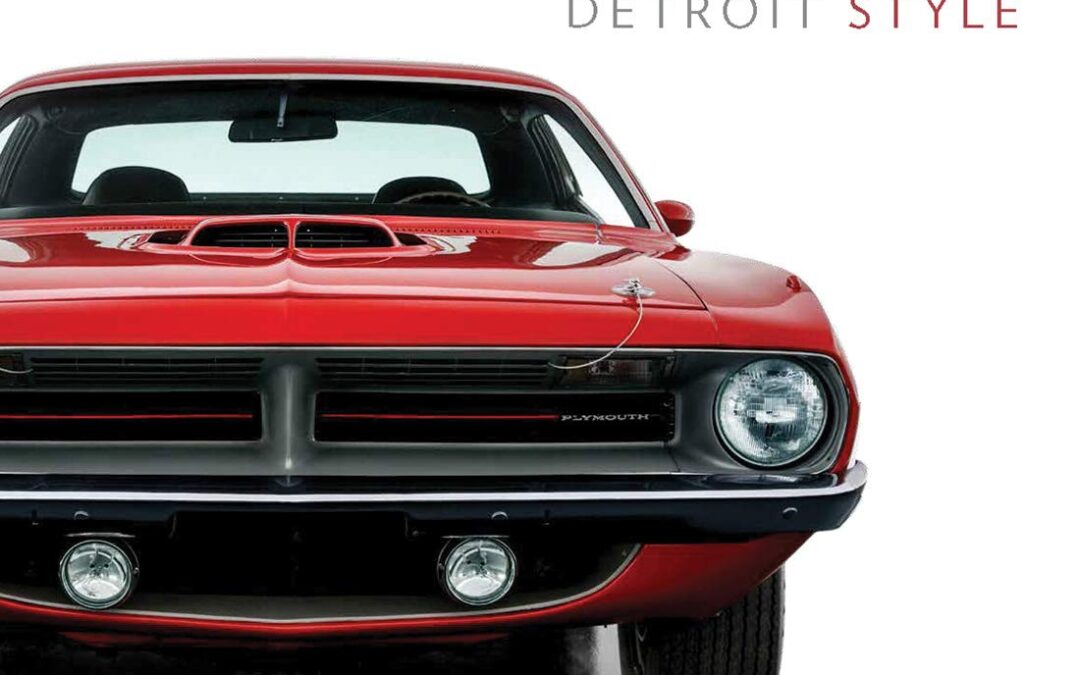
A dynamically illustrated exploration of 70 years of automotive design in the Motor City
Detroit, nicknamed Motor City, has always been a leader in car design. As the city became the center of the American automobile industry in the early 20th century, its studios became incubators for new ideas and new styles. This volume highlights the artistry and influence of Detroit designers working in the industry between 1950 and the present day, giving readers a sumptuously illustrated opportunity to discover the ingenuity of influential (and surprisingly little-known) figures in postwar American car design. Detroit Style showcases 12 coupes and sedans, representing both experimental cars created solely for display and iconic production models for the mass market. Dozens of design drawings and images of studio interiors—along with paintings and sculptures—highlight the creative process and dialogue between the American art world and car culture. These materials in addition to interviews with influential figures in car design today bring new insights and spark curiosity about the formative role Detroit designers have played in shaping the automotive world around us, and the ways their work has responded to changing tastes, culture, and technology.
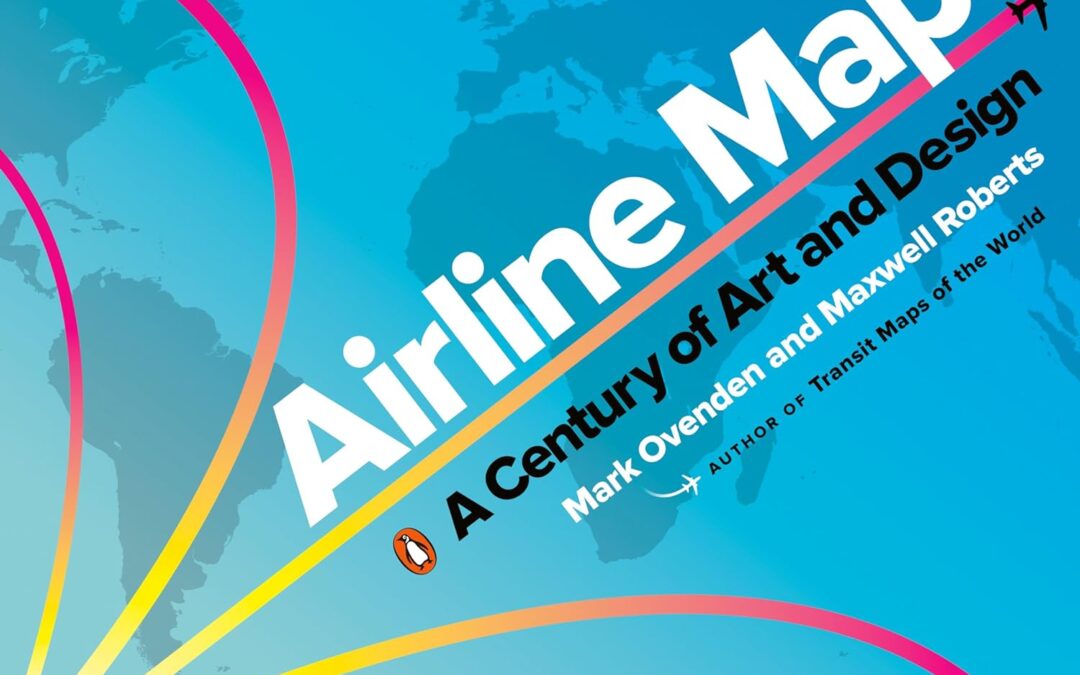
A nostalgic and celebratory look back at one hundred years of passenger flight, featuring full-color reproductions of route maps and posters from the world’s most iconic airlines, from the author of bestselling cult classic Transit Maps of the World.
In this gorgeously illustrated collection of airline route maps, Mark Ovenden and Maxwell Roberts look to the skies and transport readers to another time. Hundreds of images span a century of passenger flight, from the rudimentary trajectory of routes to the most intricately detailed birds-eye views of the land to be flown over. Advertisements for the first scheduled commercial passenger flights featured only a few destinations, with stunning views of the countryside and graphics of biplanes. As aviation took off, speed and mileage were trumpeted on bold posters featuring busy routes. Major airlines produced highly stylized illustrations of their global presence, establishing now-classic brands. With trendy and forward-looking designs, cartographers celebrated the coming together of different cultures and made the earth look ever smaller.
Eventually, fleets got bigger and routes multiplied, and graphic designers have found creative new ways to display huge amounts of information. Airline hubs bring their own cultural mark and advertise their plentiful destination options. Innovative maps depict our busy world with webs of overlapping routes and networks of low-cost city-to-city hopping. But though flying has become more commonplace, Ovenden and Roberts remind us that early air travel was a glamorous affair for good reason. Airline Maps is a celebration of graphic design, cartographic skills and clever marketing, and a visual feast that reminds us to enjoy the journey as much as the destination.
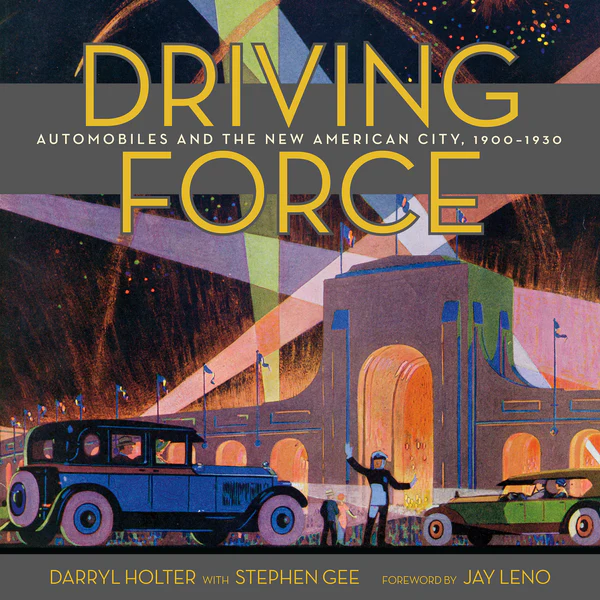
Driving Force: Automobiles and the New American City 1900-1930 (Angel City Press) explores how Los
Angeles’s enigmatic car culture propelled the explosive growth of America’s passion for cars. And with thoroughly researched text and page-after-page of vintage images, it shows how roadblocks that limited the sales of automobiles in the rest of the country, were eliminated in a new-thinking city in the earliest days of the car industry.
At the dawn of the twentieth century, as Los Angeles transformed from a rugged outpost to a booming metropolis, so too did the fledgling automobile simultaneously come of age. Ignited by an unlikely and visionary mix of entrepreneurs who ventured into unknown territory, early adopters broadened the market and convinced the public that cars were no longer a luxury—they were the ultimate modern necessity. From these early enthusiasts, men and women in various business recognized that the automobile would change society and wanted a piece of that action. The city’s auto business emerged initially among bicycle shop owners, carriage retailers, and automobile aficionados who started selling—and repairing!—cars. Their workshops thrived, expanded, and eventually became dealerships, the key component to the auto boom.
In this first major history of dealers at work—and one of the first books to chronicle the early history of cars in Los Angeles—authors Darryl Holter and Stephen Gee share the untold story of pioneering automobile dealers who seized the chance to join a start-up industry that reinvented an American city. Some became wealthy and powerful, others failed. But the lure of the automobile never wavered.
The L.A. dealers helped change the way cars were sold. They championed selling cars on credit while accepting“used cars” that buyers “traded in” so they could buy a new one. They introduced the West Coast to the concept of dealerships with service bays for on-site car repairs; persuaded manufacturers to design cars to their specifications and created custom vehicles and innovations that were copied around the country.
With more than 150 spectacular vintage images—many never before published—Driving Force brings to life the people who made the automobile an icon of the modern American city. In its pages, readers will discover how the story of the automobile is interwoven with Southern California’s unique topography and sun-drenched climate; a new era of women’s rights, and a growing female influence on automobile design; the creation of the Los Angeles Auto Show and the remarkable 1929 fire that threatened to destroy it; and how car dealers launched renowned L.A. radio and television stations, including KNX, KFI, and KCBS-KCAL.
As car collector extraordinaire Jay Leno explains in his Foreword to Driving Force, “Darryl Holter shows that auto retailers connected manufacturers to buyers, changing America and shaping the history, economy, and culture of Los Angeles.”

A groundbreaking book on how automotive styling was born, the artists who made it happen, and how Motor City was changed forever.
Printed in a large 12″ x 12″ format with 296 hardbound pages, Detroit Steel Artists is the first comprehensive story about the avant-garde artists of the automotive business—the industries’ outcasts who changed Motor City forever and made styling an important selling point in the early 1920s.
Styling is a given today for selling cars. How did that come to be? Societal changes, including the modernization of business and the women’s movement, were powerful factors for styling’s rise in significance. The forward-looking semi-custom car designs, from companies such as Le Baron and Dietrich, became a key strategy for styling’s acceptance in Detroit for production cars—before Harley Earl.
Inspired by Edsel Ford’s vision, Ray Dietrich, Tom Hibbard, and Ralph Roberts battled with engineers and executives in drafting rooms and board rooms over design. Packed with lively first-person stories supported by extensive research, Detroit Steel Artists relates the successes and failures of these fascinating pioneering steel artists. With more than a hundred period and modern images, Detroit Steel Artists takes readers on a panoramic tour of some of the most beautiful cars of the Classic Car Era—the zenith of automotive design.
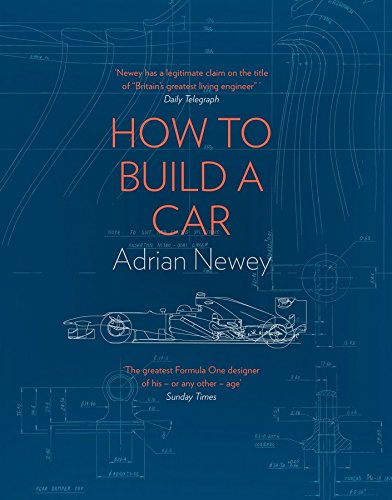
IN STOCK NOW!
The world’s foremost designer in Formula One, Adrian Newey OBE is arguably one of Britain’s greatest engineers and this is his fascinating, powerful memoir. How to Build a Car explores the story of Adrian’s unrivaled 35-year career in Formula One through the prism of the cars he has designed, the drivers he has worked alongside and the races in which he’s been involved. A true engineering genius, even in adolescence Adrian’s thoughts naturally emerged in shape and form – he began sketching his own car designs at the age of 12 and took a welding course in his school summer holidays. From his early career in IndyCar racing and on to his unparalleled success in Formula One, we learn in comprehensive, engaging and highly entertaining detail how a car actually works. Adrian has designed for the likes of Mario Andretti, Nigel Mansell, Alain Prost, Damon Hill, David Coulthard, Mika Hakkinen, Mark Webber and Sebastian Vettel, always with a shark-like purity of purpose: to make the car go faster. And while his career has been marked by unbelievable triumphs, there have also been deep tragedies; most notably Ayrton Senna’s death during his time at Williams in 1994. Beautifully illustrated with never-before-seen drawings, How to Build a Car encapsulates, through Adrian’s remarkable life story, precisely what makes Formula One so thrilling – its potential for the total synchronicity of man and machine, the perfect combination of style, efficiency and speed.

Ride along on the search for forgotten automotive gems in the Motor City.
Detroit has been America’s Motor City for decades. It’s home to Ford, General Motors, and Chrysler, as well as numerous auto industry companies and specialty and speed shops. At the same time, it’s the poster child for urban blight and dysfunction. It’s truly a city of contrasts, which presented challenges and opportunities in equal measure to barn finder Tom Cotter.
In Motor City Barn Finds, Cotter plies his trade in a locale rich with automotive history. Detroit’s lost cars are abandoned in empty lots, resident in decrepit buildings, squirreled away in garages, and stashed in historic wrecking yards.
Behind the wheel of his classic 1939 Ford Woodie, Cotter trolls the back streets and neighborhoods of this historic city looking for lost automotive gems accompanied by photographer Michael Alan Ross.
As America’s Motor City, Detroit is an emotional and historical mecca for car enthusiasts, capable of drawing hundreds of thousands of car people for events like Woodward Dream Cruise and attracting design-forward companies like Shinola. At the same time, it’s intimidating to navigate, with numerous dodgy neighborhoods and risky abandoned factory sites. Add it all together and you have fascinating and intriguing opportunities to dig for barn-find gold.
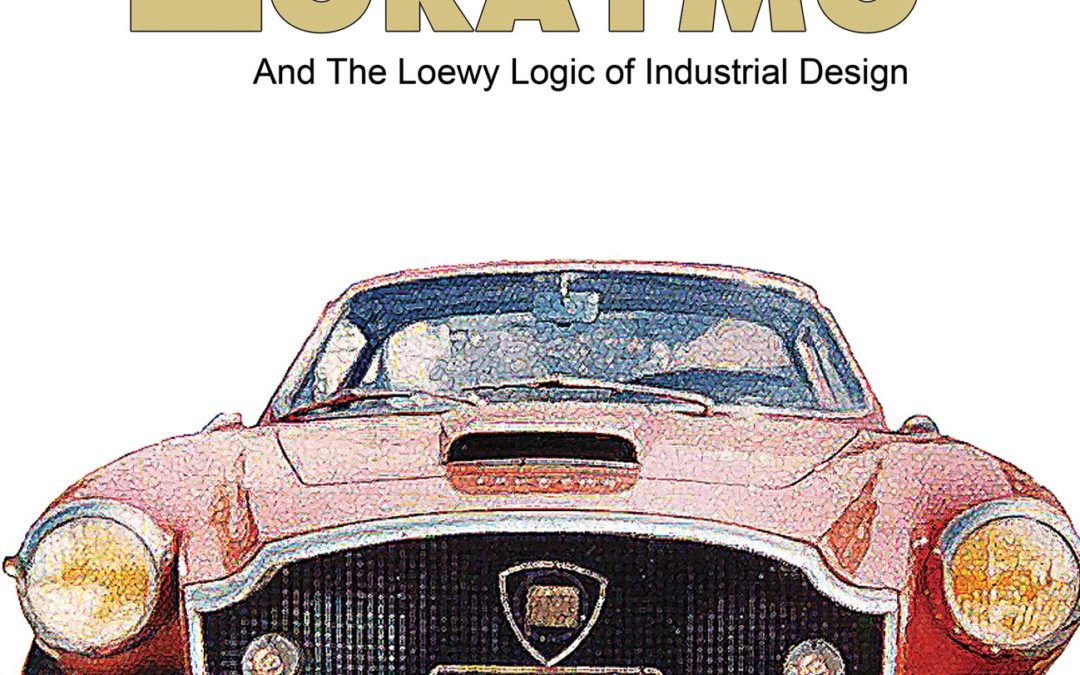
The new book Lancia Loraymo from Fetherston Publishing LLC can best be described as an automotive mystery. Researched and written by journalist Brandes Elitch, it follows the development of the Lancia Loraymo, which was designed by the Father of Industrial Design, Raymond Loewy, as a personal project to advertise the Loewy brand. Built for the 1960 Paris Motor Show, where it was the hit of the show, the Loramyo was reminiscent of the fabulous cars that graced the Concours d’Elegance circuit in pre-war France. The chassis was specially prepared by the Lancia factory to showcase the new Flaminia series with a handmade aluminum body by Carrozzeria Moto. It garnered enormous publicity for a few short years, and then disappeared. Like the intrigue that surrounds the fabled Chrysler Norseman dream car, the missing Loramyo came back to life when it was found 20 years later in a scrap yard in Sacramento, CA, missing its original drive train and scheduled to be crushed. This is the story of the birth, near-death, discovery and restoration of Loewy’s Loraymo. Elitch follows the trail, recalling the history of the car, its illustrious designer, and the Lancia marque, as it pertained to Loewy’s perspective on automobile and industrial design of the time. This historical journey wraps up with the design of the Studebaker Avanti, which utilized many of the design cues from the Loraymo. This is a fascinating story of one of the most mysterious show cars of the post-war period. It is set in large type to accommodate the baby boomer readers and is well documented in 128 pages with a 100 photos and illustrations. It is only available in a limited hardback edition of 500 copies.
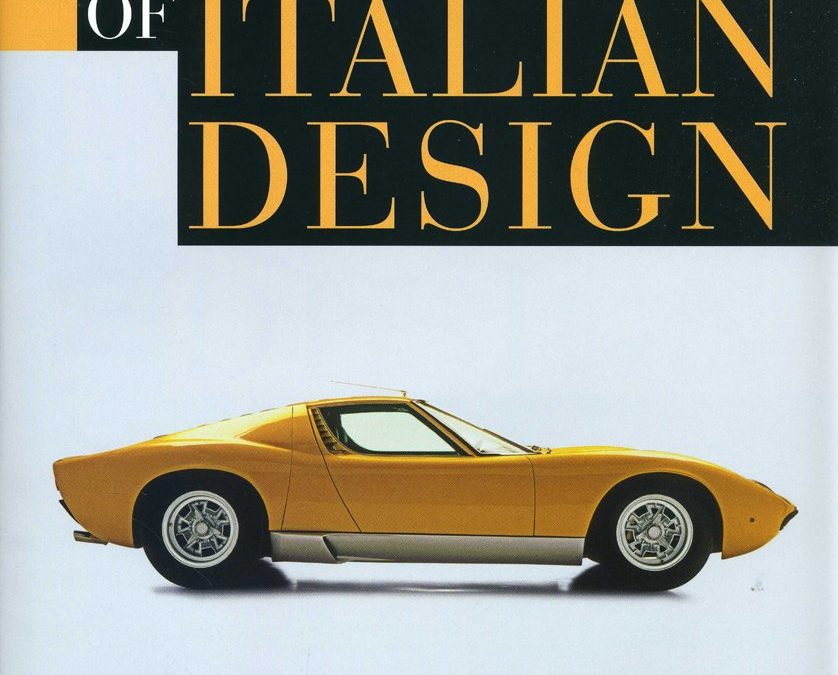
Design in Italy has always reflected the national identity of the Italians themselves: sexy, stylish, and innovative, and with more than a touch of audacity. No other country takes design so seriously, nor treats its leading practitioners with such reverence. In Italy a design is never just a product, but an expression of culture. There is a strongly held belief that good design should be implemented across all aspects of life, or as the architect Ernesto Rogers put it, “from the spoon to the city.”
Masterpieces of Italian Design is an overview of the past two centuries in Italian design and manufacturing. This new title documents the 100 most pioneering designs to come out of Italy, and explains why, with stunning images (including rare archival photographs, illustrations and patent drawings) and explanatory texts.
The Italian design community is at the forefront of modern design practice and has pioneered many styles and movements, from Rationalism to Post-Modernism and Late-Modern. With its strong design-engineering focus, highly skilled craft workshops, and specialized factories, Italy has always provided the optimum creative climate for designers and manufacturers. This major new book features the ultimate examples of Italian design from among others Alessi, B&B Italia, Cappellini, Cassina, Ducati, Ferrari, Fiat, Kartell, Lamborghini, Luceplan, Magis, Moroso, Pagani, and Riva.

New York City custom car and motorcycle culture has long been overshadowed by the left coast designers and machines. In this unprecedented book, urban anthropologist Michael McCabe presents the stories, innovators, and machines behind NYC car and motorcycle builders. He reveals an outsider’s tale filled with passion, creativity, and high-speed thrills. Based on a year’s worth of interviews and photo shoots with nearly 40 custom builders, McCabe offers unique access to their private, creative lives and impressive collections of machines in garages and workshops throughout the five boroughs. Legendary urban personalities like “Big Daddy” George LeBlanc, Mel Bernstein, and Dick Zigun tell the history of NYC horsepower, including nostalgia for the days of the NASCAR-sanctioned Weissglass Speedway on Staten Island, illegal street racing, car clubs, and shows. Voices from the groundswell of younger builders, like John Copeland, Sal Pepi, and Pete Ranko, complete this collection of oral histories and images and show respect for the city’s hands-on narrative. With nearly 800 images of custom cars and motorcycle, this history is ideal for builders, car collectors, and urban historians.

SOLD OUT
The complex subject is explained with completeness and simplicity of expression, so that it can be read and understood by everyone. The motor racing wing is at the center of the story, while the picture is completed by the entire aerodynamic behavior of the racing car. The volume also includes a specific chapter on CFD (fluid dynamics computation). Hundreds of illustrations enhance this work, which is an indispensable starting point for people who want to know all about this complex but fascinating subject.
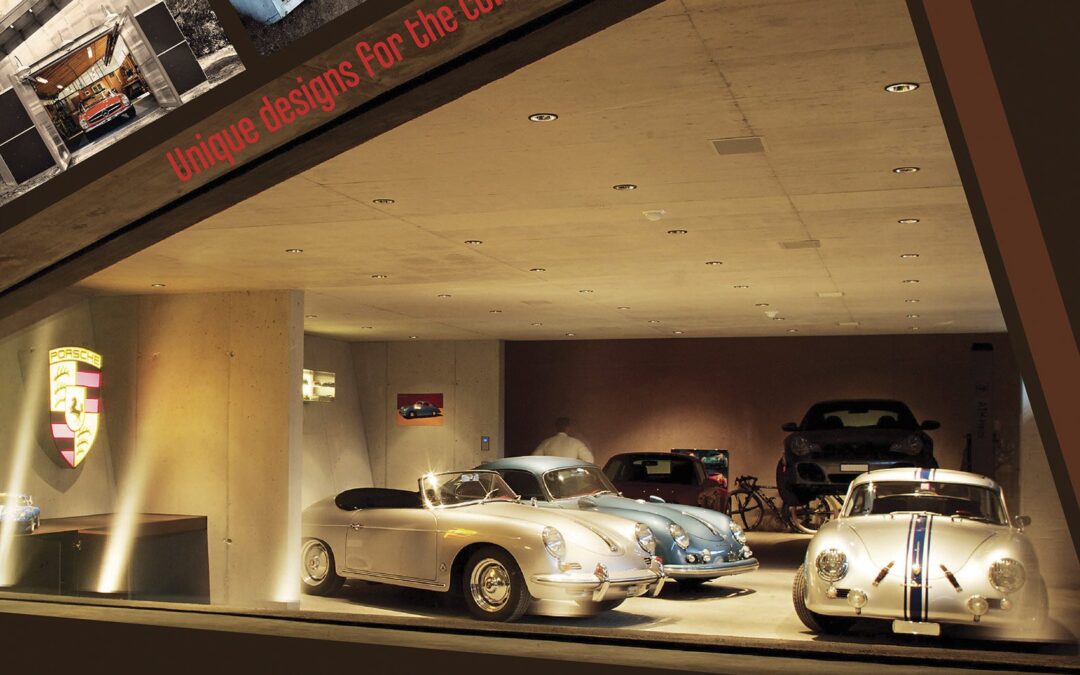
With more than forty international examples of practical yet architecturally fascinating solutions, this one-of-a-kind book shows innovative, beautiful spaces to park your car. From an underground parking garage to a car elevator, and from a contemporary city carport to a “living room garage,” here is a wealth of creative ideas for housing the automobiles you love. Designed for architects, builders, and those who are passionate about their cars, this beautiful idea book provides convincing and outstanding general concepts that can be borrowed to create the perfect housing for your own four-wheeled vehicles whether you live in an urban area, have a challenging home site, or just want to add to your estate. Designs include garages that stand alone and those that are beautifully integrated into single-family homes.
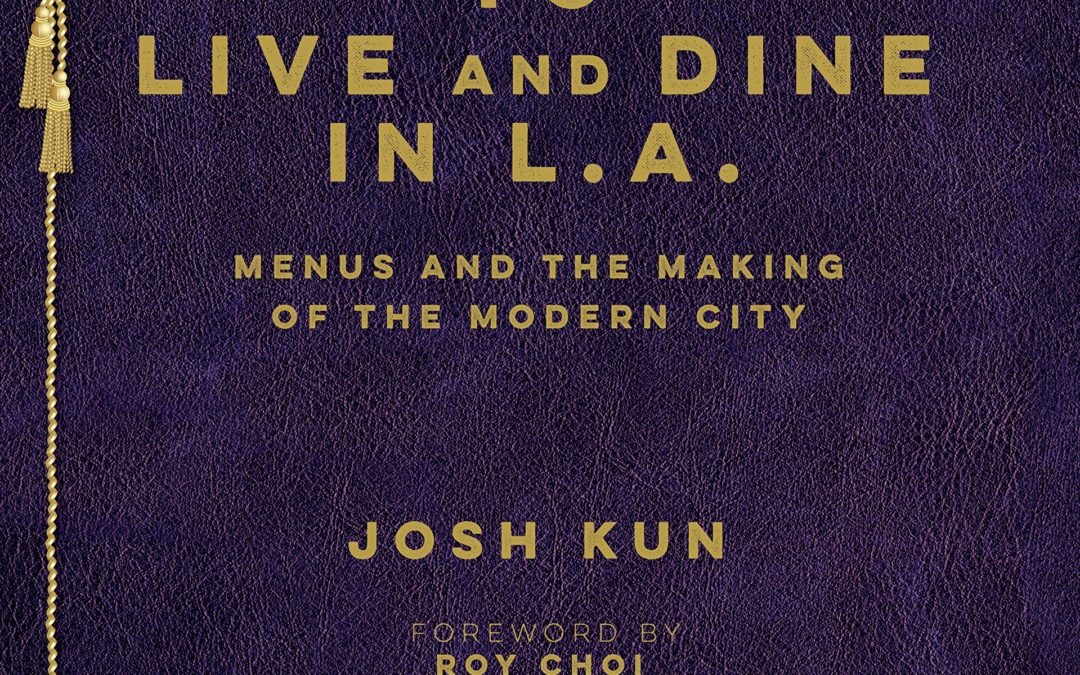
How did Los Angeles become the modern city the world watches? We know some of the answers all too well. Sunshine. Railroads. Hollywood. Freeways. But there’s another often overlooked but especially delicious and revealing factor: food.
Think veggie tacos and designer pizzas, hot dogs on sticks and burgers from golden arches, Cobb Salads and chocolate-topped ice cream sundaes, not to mention the healthiest dishes on the planet. Ask anyone who has eaten in L.A.–the city shapes the tastes that predict how America eats. And it always has.
In its fourth book collaboration with the Los Angeles Public Library and the Library Foundation of Los Angeles, Angel City Press releases To Live and Dine in L.A.: Menus and the Making of the Modern City by Josh Kun.With more than 200 menus–some dating back to the nineteenth century–culled from thousands in the Menu Collection of the Los Angeles Public Library, To Live and Dine in L.A. is a visual feast of a book.
But it’s more. Much more.
In his detailed history, author Josh Kun riffs on what the food of a foodie city says about place and time; how some people eat big while others go hungry, and what that says about the past and now. Kun turns to chefs and cultural observers for their take on modern: Chef Roy Choi sits down long enough to say why he writes “some weird-ass menus.” Pulitzer Prize-winning critic Jonathan Gold looks at food as theater, and museum curator Staci Steinberger considers the design of classic menus like Lawry’s. Restaurateur Bricia Lopez follows a Oaxacan menu into the heart of Koreatown.
The city’s leading chefs remix vintage menus with a 21st-century spin: Joachim Splichal, Nancy Silverton, Susan Feniger, Ricardo Diaz, Jazz Singsanong, Cynthia Hawkins, Micah Wexler, Ramiro Arvizu and Jaime Martin del Campo cook up the past with new flavors. And, of course, the menus delight: Tick Tock Tea Room, Brown Derby, Trumps, Slapsy Maxie’s, Don the Beachcomber, and scores more.
Kun tackles the timely and critically important topic of food justice, and shows how vintage menus teach us about more than just what’s tasty, and serve as guides to the politics, economics, and sociology of eating.
America is a dining-out nation, and our research indicates that L.A. has long been one of its top dining-out towns. The Library’s collection is a living repository of meals past, an archive of urban eating that tells us about the changing historical role of food in the city, which is to say it tells us about just about everything that food touches: economics, culture, taste, race, politics, architecture, class, design, industry, gender, to name just some of the themes that recur on menu pages.
Kun challenged contributors to tackle subjects that readers may have never contemplated. As the renowned L.A. chef Roy Choi points out in his Foreword to To Live and Dine in L.A.:
The more I looked at the menus, the more they told me about the city and how neighborhoods developed. But it was the menus that I couldn’t find that forced me to ask questions about how life really was. I started to think about how the city is now and if those missing menus were a reflection of life just as it is now. Were these menus of the affluent and middle-class? Were the working classes even eating with menus, or were they mostly eating at stands and carts? Were there disparities and access problems just like today? To Live and Dine in L.A. is the first book of its kind–the definitive way to read a menu for more than just what to order. It’s about how to live. And how to dine. In L.A.
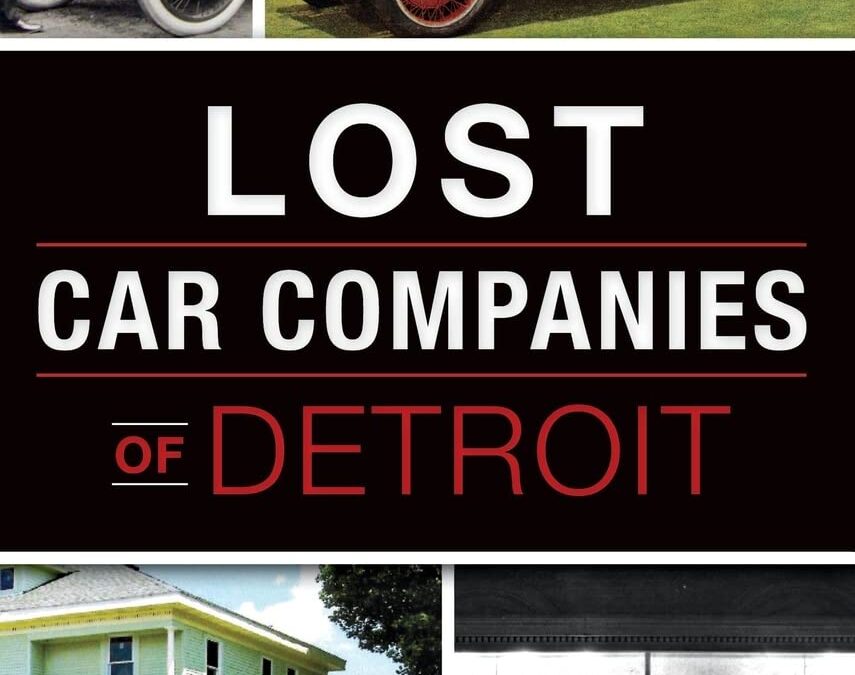
Among more than two hundred auto companies that tried their luck in the Motor City, just three remain: Ford, General Motors and Chrysler. But many of those lost to history have colorful stories worth telling. For instance, J.J. Cole forgot to put brakes in his new auto, so on the first test run, he had to drive it in circles until it ran out of gas. Brothers John and Horace Dodge often trashed saloons during wild evenings but used their great personal wealth to pay for the damage the next day (if they could remember where they had been). David D. Buick went from being the founder of his own leading auto company to working the information desk at the Detroit Board of Trade. Author Alan Naldrett explores these and more tales of automakers who ultimately failed but shaped the industry and designs putting wheels on the road today.

More than half a century ago the Boeing 747 took to the air for the first time; it is considered the first large-capacity civilian airliner. Lovingly nicknamed the “Jumbo Jet,” the aircraft quickly became the flagship of any airline that operated it. While sales were initially modest, the unmistakable four-engine jet became a bestseller after much-improved and more-advanced versions became available in the 1980s. Though recent technological developments have caused the age of the big four-engine passenger jet to slowly come to an end, the elegant 747 is undoubtedly an aviation legend that still turns heads at airports. Sadly, after a 50-year-plus service career, the last 747s are due to come off the factory line in 2022. The history of the 747’s design, development, and operational use is presented in detail in this book, as is its use by many of the world’s most famous airlines, including TWA, Pan Am, Lufthansa, Qantas, British Airways, El Al, Air France, and nearly 100 others throughout its long career. Governments and militaries worldwide have also flown the 747, for missions including ferrying NASA’s former space shuttle fleet, and the current US Air Force One presidential aircraft. Technical specifications for the 747 and its variants, as well as period photographs, bring to life the fascinating history of one of Boeing’s most iconic aircraft.

Host Lloyd Bridges takes you on a tour of motorsports in the 60’s. Cobra test at Riverside with Ken Miles, Shelby driver of the era. See the 007 Bond Aston Martin and Sean Connery, slot car racing, bubbletops, Craig Breedlove at salt flats, classic drag racing, and big daddy Ed Roth. This is a 40 min. transport back in time. You will be light-headed watching this show. It is the complete uncut version broadcast Thursday, Sept 8, 1967, on CBS. This is a digital re-master directly from film. It looks great! Bonus
Feature: Motor Mouth Pilot
Live the time machine from 1967 to 2002. See how when things change they really stay the same! Take a ride with hosts Barbi Orr and Jane Norris as they run their motor mouth at events like Willow Springs, You will see many cars from the 60’s still racing today: Cobras, GT350, Vettes, and many others. Also celebrity interviews – see how today’s high-tech BLING BLING WHEELS are designed by Keith Kaucher (today’s top wheel designer). Go to a hidden speed shop in Culver City, Calif., where top master mechanic Steve Beck stores the rarest cars you’ll ever see!
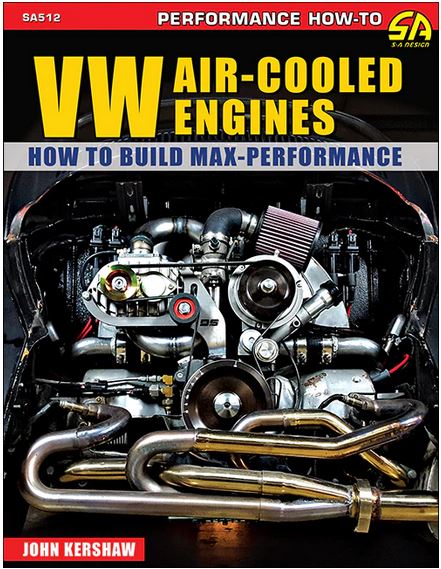
The VW Beetle (officially the Volkswagen Type 1) needs no introduction. Manufactured and marketed globally by Volkswagen from 1938 to 2003, more than 21 million were produced and sold around the world. Extremely popular in the US and Europe during the 1950s and 1960s, increasing competition from Japanese, American, and European manufacturers as well as stiffening demands for better safety and emissions contributed to a sharp decline in sales in the early 1970s. The Beetle was manufactured in much smaller numbers in Germany until the late 1970s, when production shifted to Brazil and Mexico, where operating cost was a was a large factor in keeping the Beetle alive. While simple and fun, the Beetle had simply become outdated.
Of course, the enthusiast market did not see it that way. Aficionados loved the simplicity in the design as well as its aesthetics and enjoyed tinkering with the mechanicals of their Beetles, Buses, Type 3 models and Karmann Ghias. There is no shortage of options when customizing your Beetle, and for many, extracting as much performance out of their air-cooled flat 4 was the way to go. Not only does it remedy the issue of keeping up with modern traffic but Beetles also respond really well to modifications and have a robust aftermarket to support them.
In VW Air-Cooled Engines: How to Build Max Performance, VW veteran Dr. John F. Kershaw lays the groundwork for getting the most possible power for your desired use and application. Covered here are all the various power levels and components to get you there. It’s all here: rotating assemblies, cylinder heads, cams and the valvetrain, engine blocks, ignitions systems, fuel injection, carburetors and induction, exhaust, sources for parts, and even turbos and superchargers.
Are you looking for just a little more power to keep up with traffic or maybe a streetable high-performance machine? Perhaps you are interested in a little street/strip action or even all-out racing applications. All of your options are examined in this book. Add it to your air-cooled library today.















